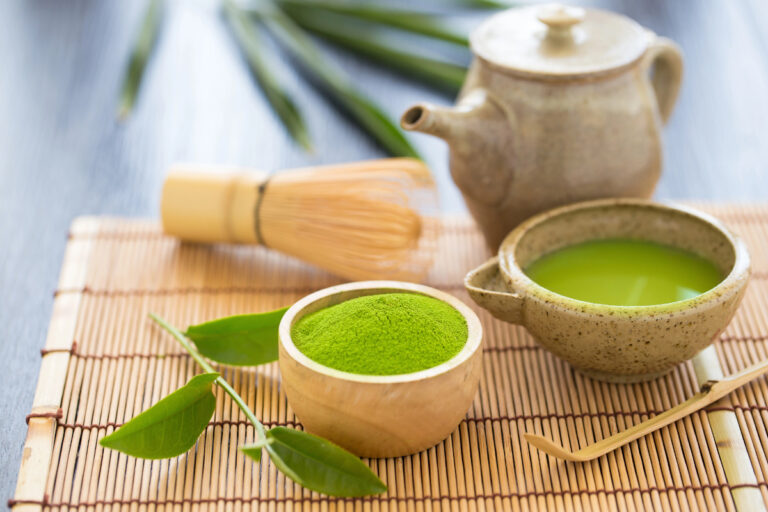Matcha is a finely ground powder of specially grown and processed green tea leaves.
Originating from Japan, matcha holds significant cultural, historical, and culinary importance. The tea plants used for matcha are typically shade-grown for about three to four weeks before harvest, a process that enhances the production of chlorophyll, giving the leaves a deep green color and rich flavor.
Table of Contents
Characteristics
- Production Process: After harvesting, the leaves (called tencha) are steamed to prevent oxidation, then dried and stone-ground into a fine powder.
- Appearance: Matcha has a vibrant green color due to the high chlorophyll content.
- Flavor Profile: It offers a complex flavor profile with a balance of natural sweetness, umami, and a slight herbal bitterness.
Cultural Significance
- Japanese Tea Ceremony: Matcha is central to the traditional Japanese tea ceremony (Chanoyu or Sadō), which is a choreographed ritual of preparing and serving the tea with a focus on harmony, respect, purity, and tranquility.
- Zen Buddhism: Historically, Zen monks used matcha to stay alert during long meditation sessions, integrating it into their spiritual practices.
Culinary Uses
- Traditional Preparation: Prepared by whisking a small amount of matcha powder with hot water using a bamboo whisk (chasen) until frothy.
- Beverages: Used in lattes, smoothies, and iced drinks.
- Cooking and Baking: Incorporated into desserts like cakes, cookies, ice cream, and chocolates to add flavor and color.
Storage and Handling
- Proper Storage: Should be kept in an airtight container, away from light, heat, and moisture to preserve its color and flavor.
- Shelf Life: Best consumed shortly after opening for optimal freshness and taste.

